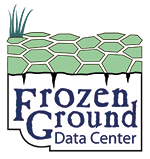
Land Resources of Russia -- Maps of Soil Characteristics, Version 1
Data set id:
GGD601
DOI: 10.7265/vk5t-nh20
This is the most recent version of these data.
Overview
This data set consists of maps of various soil characteristics for all of Russia. The maps are available as ESRI Shapefiles and they are accompanied by databases of soil profiles and related characteristics. The soil classification Shapefile was generalized from the standard 1:2,500,000 soil map of Russia (Fridland, 1988). Several different soil classifications are presented as well as detailed soil characteristics. Additionally, investigators compiled two databases (.dbf files) of detailed soil characteristics from 234 measured soil profiles. These data were extracted from a larger collection entitled Land Resources of Russia. Data and documentation © 2002 copyright International Institute for Applied Systems Analysis and the Russian Academy of Sciences.
Parameter(s):
CRYOSOLSPERMAFROSTSOILSSOIL TEMPERATURE
Platform(s):
Not Specified
Sensor(s):
Not Specified
Data Format(s):
Shapefile
Temporal Coverage:
1 January 1988 to 31 December 2002
Temporal Resolution:
Not Specified
Spatial Resolution:
- Not Specified
Spatial Coverage:
N:
77.7
S:
41.2
E:
180
W:
27.3
Blue outlined yellow areas on the map below indicate the spatial coverage for this data set.